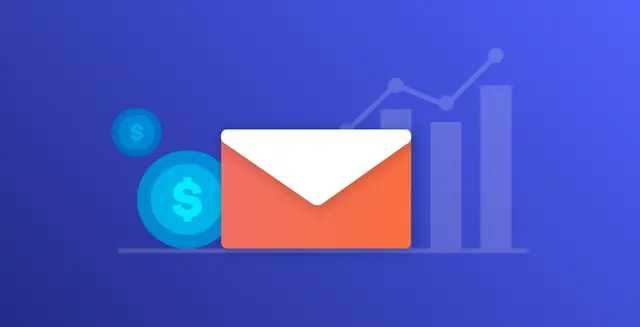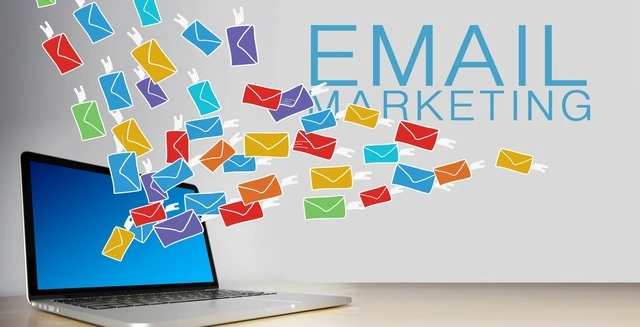
The foundation of any digital marketing strategy is email marketing, which regularly produces impressive outcomes for companies of all kinds. Email is still one of the best mediums for generating leads, interacting with clients, and boosting sales. Following recommended practices, however, is where email marketing shines. Using tried-and-true methods will help you get a far higher return on investment (ROI). We'll look at practical email marketing best practices in this guide to help you get the most out of your campaigns.
Understanding Email Marketing Best Practices
What Are Email Marketing Best Practices?
A collection of rules called "email marketing best practices" will assist you in designing, distributing, and overseeing your email campaigns successfully. By following these guidelines, you can be sure that your emails will not only be well-received but also fulfill their intended goal—whether that be boosting interaction, promoting conversions, or cultivating brand loyalty. Following these procedures is essential for several reasons. In the first place, they keep your audience engaged and keep your emails from becoming tagged as spam. Second, they guarantee that your campaigns are performance-optimized, which improves outcomes and raises the return on investment.
The Impact of Best Practices on ROI
Your efforts are more likely to succeed when you use email marketing best practices. Every element of your email approach, from creating attention-grabbing subject lines to making sure your content is pertinent and individualized, can help increase engagement rates. Think about this: Personalized content plus a well-segmented email list can dramatically boost open, click-through, and conversion rates. Because their efforts are more focused and successful, companies that have successfully adopted these best practices frequently claim higher returns on investment.
Building a Strong Email List
Start with Permission-Based Marketing
Making sure that your email list is permission-based is one of the fundamental best practices for email marketing. This indicates that every person on your list has given you their express consent to email them. Why does this matter? In addition to assisting you in adhering to regulatory mandates such as CAN-SPAM and GDPR, permission-based marketing guarantees that your target audience will accept your communications. Using opt-in forms on your website, providing helpful material in exchange for sign-ups, or launching lead-generation efforts emphasizing the advantages of subscribing are just a few moral ways to collect email addresses.
Segmenting Your Audience for Better Results
Segmenting your email list is the next step after creating a strong one. The process of breaking down your email list into more manageable groups according to particular standards, including engagement levels, demographics, or behavior, is called segmentation. You may create more relevant and interesting content by segmenting your audience so that your communications are tailored to each group's particular requirements and interests. You may, for instance, make subgroups according to previous purchasing patterns, geographical area, or even the degree of involvement with prior emails. One of the email marketing best practices that can significantly increase the efficacy of your campaign is to use a focused approach.
Maintaining a Clean Email List
Sustaining good deliverability rates and evading spam filters require a clean email list. Some subscribers' email addresses might expire or become inactive over time. You may increase open rates and make sure that your emails are being read by interested receivers by routinely eliminating these dormant subscribers from your list. List cleaning also lessens the possibility of receiving an ISP flag, which might damage your sender's reputation. Keeping your email list clean is one of the finest practices that will help you improve campaign performance and return on investment.
Crafting Effective Email Content
Writing Compelling Subject Lines
The effectiveness of your email greatly depends on the subject line because it is the first thing your receivers will see. A strong subject line should pique the recipient's interest, draw them in, and persuade them to read the email. Use action-oriented language, keep your subject lines brief, and think about adding customization aspects like the recipient's name or previous interactions to accomplish this. You may ensure higher open rates by identifying what most resonates with your audience by testing various subject lines.
Designing Emails That Convert
Email design has a big impact on how people view and engage with your content. Focus on using clear, uncomplicated design in your emails to direct the reader's attention to the most crucial components, including your call-to-action (CTA). Since most recipients of your emails will be using smartphones, make sure they are optimized for mobile devices. Using a clear hierarchy, balancing text and photos, and making sure your call to action is prominent are more best practices for email design.
Personalization and Relevance
Making the content of the email relevant to the recipient's needs and interests is what is meant by personalization, which goes beyond simply adding their name. This can be done by using information from previous exchanges, transactions, or online surfing patterns to customize your communications. For example, you could provide product recommendations based on past purchases or provide your most devoted clients access to exclusive offers. Increasing the possibility of engagement through personalization in your emails is essential for optimizing return on investment.
Optimizing Email Campaigns for Maximum ROI
A/B Testing for Continuous Improvement
One effective method for improving your email campaigns is A/B testing. Sending two alternative versions of the same email to various audience segments allows you to compare how well each version works. To find out what generates the greatest interaction, test out different components like as call-to-action buttons, photos, and subject lines. You may enhance your campaigns over time and achieve better outcomes and a higher return on investment by consistently testing and improving your emails.
Timing and Frequency of Emails
The timing and frequency of your email campaigns have a big influence on their success. To determine the best schedule for your audience, best practices advise testing with various send times and frequencies. For instance, certain audiences might react more favorably to emails delivered in the morning, while others might be more interested in them in the evening. In a similar vein, choosing the appropriate frequency—daily, weekly, or monthly—will assist you in striking a balance between remaining in the forefront of your mind and preventing email fatigue.
Analyzing Performance Metrics
It's critical to monitor and evaluate important performance indicators like open rate, click-through rate, and conversion rate to optimize return on investment. These analytics offer insightful information on the effectiveness of your emails and potential areas for development. poor open rates, for instance, can mean that your subject lines need improvement, whereas high click-through rates but poor conversion rates could mean that your landing page isn't engaging enough. You can continuously enhance your campaigns and get greater results by using data to hone your strategy.
Ensuring Compliance and Deliverability
Understanding and Following Email Marketing Laws
In addition to being required by law, adhering to email marketing regulations such as the CAN-SPAM Act and GDPR is a best practice that safeguards the reputation of your company. These laws specify what information must be included in your emails, such as an unsubscribe link, and how you can gather, retain, and use email addresses. Recipients will appreciate your emails if you comply, and you won't face penalties that could hurt your company.
Improving Email Deliverability
Deliverability is the capacity of your emails to get past spam filters and into the recipient's mailbox. Deliverability is influenced by several variables, such as list quality, email content, and sender reputation. Use recommended practices, such as sticking to clean email lists, avoiding spamming language, and using reliable email service providers, to increase deliverability. Additionally, you may find and fix possible problems before they affect your campaigns by routinely checking your deliverability rates.
Conclusion
The use of email marketing best practices is crucial to developing campaigns that connect with your target audience. You may increase your return on investment considerably by developing a robust email list, producing engaging content, and consistently refining your strategy. Put these strategies into action right now to improve the performance of your email marketing campaigns. Ready to take your email marketing to the next level? Stay with us for more tips and insights on optimizing your campaigns and achieving maximum ROI. Check out our other blog "The Best Email Marketing Tools for Boosting Your Campaigns"
What to read next

